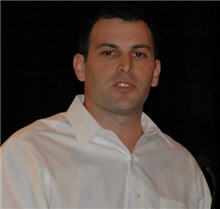Bringing Enterprise 2.0 to Morgan Stanley

Adam Carson walks the halls of Morgan Stanley in New York preaching the Web 2.0 gospel. The 28-year-old former investment banker is focused on bringing the venerable financial services firm into social Web and Enterprise 2.0, which is about leveraging Web 2.0 technologies in corporate settings.

Embracing Enterprise 2.0 will have an impact on recruiting and organization culture and structure, Carson said. Basically Morgan Stanley or any other corporation faces the choice of forcing the younger generation of employees to learn the old way of doing business or adapting to new models of work and organization.
Carson said that Morgan Stanley thinks about Enterprise 2.0 into internal and external applications. Internal applications and concepts include social networking, online communication, expertise location, participatory culture, Q&A services, personalized learning, recruiting and alumni relations. culutre. "The idea is to make the organization feel more like a community," Carson said. For customers, the key applications are for enterprisewide CRM, client communications, 360-degree views and client feedback.
Below are some of the other points Carson made during his presentation:
Keys to adoption
- Management support can make or break things
- Usability should be dead simple
- Integration into existing workflows and systems, rather than building new silos
- Accessibility via any device
- Top down--managers can lead the way. Carson noted that people at Morgan Stanley are "good at being told what to do."
- Training, not on how but why and what's different
- Templating--inside an enterprise there is a need for structure and reuse, rather than more freeform adoption
- Solving problems that IT has yet to tackle
Barrier and risks
- Lack of managment support
- Organization and cultural resistance
- Adoption 9x--a new solution has to be orders of magnitude better
- Legal and regulatory issues--everything must be archived at Morgan Stanley
- Funding--money goes to the most mission critical applications that make money
- Attention, time and priorities
- Lack of willingness to experience failure, to experiment and learn
- No long tail of users.--a small percent of people will participate
- Trouble proving business value--increasing output and decreasing inputs
Deployment considerations
- Build vs. buy
- Vendors--incumbents vs. startups. Morgan Stanley is a Microsoft shop, Carson said, and one of the issues is does the firm fill gaps in Microsoft's suite with products from innovative startups or do you wait for Microsoft to add the capabilities. A concern for Morgan Stanley is that many startups are small and may not be able to service and support a large deployment. Security and permissioning need to build in from the start.
- Rollout--strategic or emergent. A viral, emergent rollout in which you simply see how adoption progresses is more of an alternative to a strategic, mandated rollout, Carson said.
- Scope--business unit versus enterprisewide deployments
- Integration-stand alone best of breed products versus suites
- Security--hosted or behind the firewall. "Historically all of it has been behind the firewall, but I think that is starting to change. We are considering hosted applications more and more," Carson said.
Tips for bringing Web 2.0 to an enterprise
- Inject, teach and create Web 2.0 awareness
- Locate supporters in your organization
- Make friends with IT, you will need their help
- Approach senior management with a proposal
- Work closely with business management
- Gather and distribute best practices
- Feed the open mouths, don't force it
- Be patient, change takes time